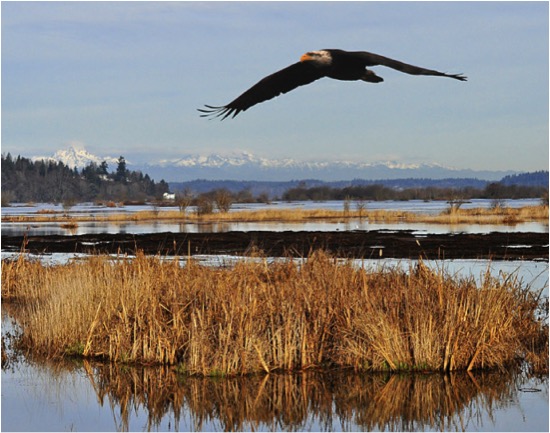Since Europeans settled in the Puget Sound, the coastal ecosystems have been degraded substantially. In fact, less than a quarter of historical estuarine wetlands still remain. The disappearance of these habitats has meant a huge decrease in shorebird populations.
In August Nicole Michele, Trina Bayard, and Ryan Hobbs, National Audubon Society, published the results of a model to aid in estuary recovery efforts. To find out more about “Modeling Avian Habitat Suitability in Puget Sound”, go to this Audubon Washington webpage
To create the model, the researchers related bird observation data of five species of birds in Puget Bay and Port Susan Bay with satellite data of land, tides and aquaculture. The five species were Northern Pintail, Greater Yellowlegs, Marsh Wren, Dunlin, and Brant. The bird observations came from several agencies’ databases – and eBird!
The studies’ results show how restoration can increase bird populations. “Prospective restoration sites that lie within historical wetlands, have currently low avian abundance, and have space for marsh migration have a high potential to benefit estuary birds.”
“The models provide two valuable pieces of information to inform conservation and restoration decisions: identification of the drivers of bird distributions, and maps showing when and where the species occur in the Puget Sound.”
Specifically, the model shows which kinds of wetland habitat–estuarine emergent wetlands, mudflats, and freshwater emergent wetlands–are associated in winter and summer with the occurrence and abundance of each species of marsh bird.
BHAS members might be especially intrigued by the models graphically displayed in the Imagery Explorer. These are interactive maps for each species that allow users to zoom in on local areas to see which specific sites have high to low populations. For Northern Pintail in winter, for example, resolution is good enough to see which parts of Mason County’s shores have high and medium populations Equally interesting are graphics for restoration scenario modeling that show how each species’ populations could rebound if their historic habitats were recovered.








